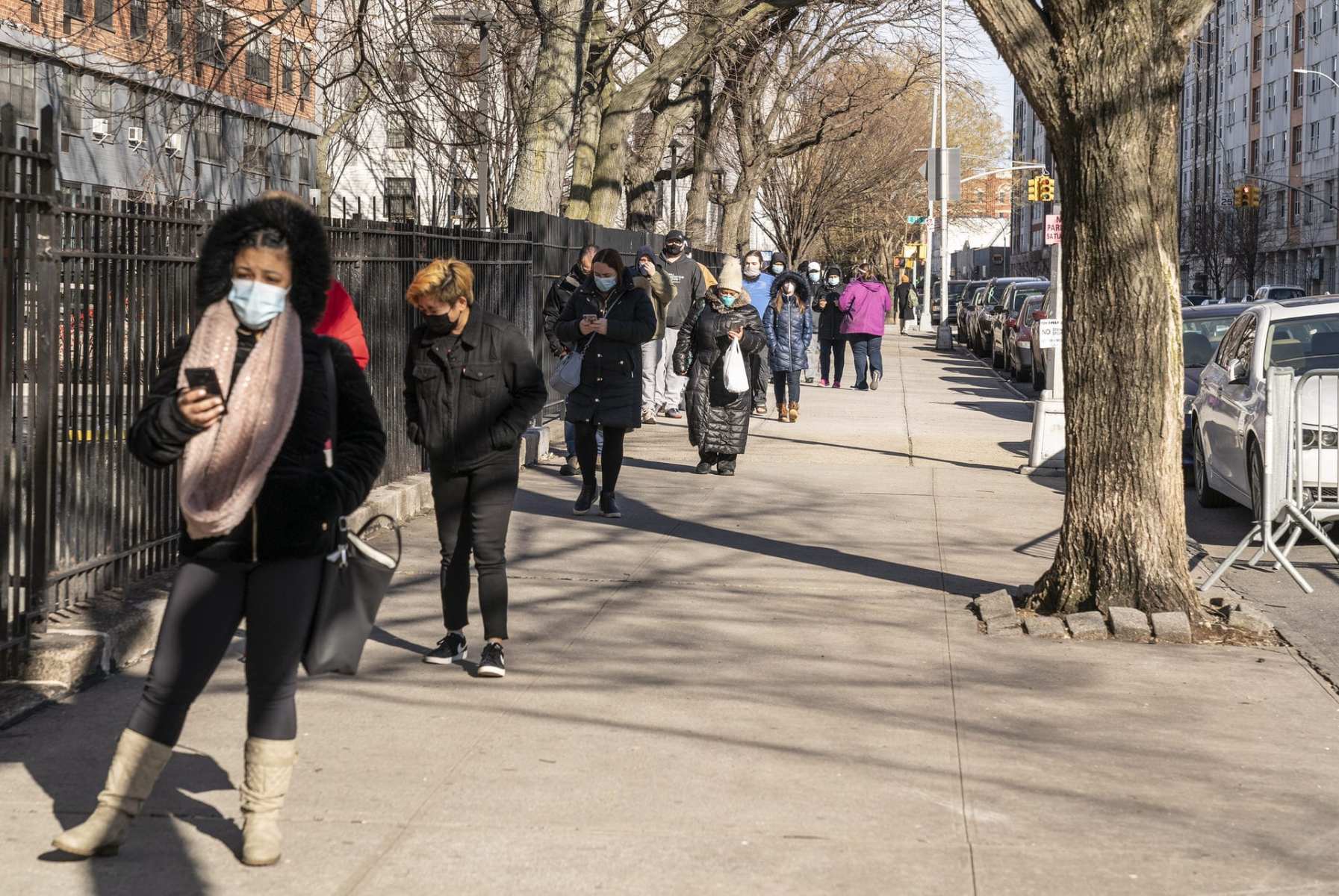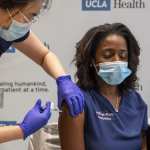As states scramble to distribute the coronavirus vaccine, emerging challenges could complicate efforts to immunize non-health care frontline workers — especially in women-dominated groups such as grocery store workers, retail workers, teachers and child care providers.
Experts say it’s unclear if state health departments, already strapped for cash and tasked with overseeing the mammoth vaccine distribution project, are planning to adequately address the structural and logistical barriers that might keep those women from being able to get the vaccine as the U.S. death count continues to skyrocket.
Hourly employees must have time to get the injection without losing pay, experts say, and vaccinations need to be available during non-work hours. Women, especially those with lower incomes and tight time constraints, need reliable transportation to get to vaccination sites. For those juggling the responsibilities of parenthood, child care will be critical. And those who develop minor symptoms after the second dose — a common sign the recipient is developing protective antibodies against the virus — may not have access to paid sick leave, which would allow them to stay home without losing income.
And the clock is ticking. States are still developing and finalizing their vaccination plans, which could soon change based on new federal guidelines put forth Tuesday. But based on current schedules, non-health care frontline workers in many states will soon be eligible for the two-shot regimen.
“It’s really important we look at this, and we think about this early and not after the fact,” said Helen Keipp Talbot, an associate professor of infectious diseases at Vanderbilt University, and a voting member of the federal Advisory Committee on Immunization Practices, which crafted the government’s coronavirus vaccine guidelines. “We need to talk about giving [workers] paid time to go get the vaccine, or they don’t get harmed for taking that time.”
Without those considerations taken into account, experts worry vaccination rates will fall below their target, and that low-income women and mothers, who are more often working in jobs with higher risk of coronavirus exposure, will face particular challenges in getting a vaccine. That would have larger ramifications for the nation’s efforts to get to any kind of herd immunity against COVID-19. So far, just over a third of all distributed vaccines have been used, according to data compiled by Bloomberg News.
“If people are not given the tools and ability to make vaccination work for them, then any challenge they already face — particularly child care — will be a barrier. And any barrier will affect the outcome,” said Jennifer Kates, a senior vice president and global health expert at the nonprofit Kaiser Family Foundation.
Vaccine availability depends on where people live, not only their state but their individual city or neighborhood. The hours at distribution sites can vary: They could be open eight hours a day, 10 hours a day or 24 hours a day; some are running five days a week, others every day. And as vaccination spreads beyond health care workers and long-term care residents — many of whom live or work in environments that can be individually targeted, like a hospital — getting vaccines to people in need will become even more of a challenge.
“It shouldn’t have to take three buses to get your vaccine. You shouldn’t have to be taking off from work to get a vaccine,” said Ruth Faden, a bioethicist at Johns Hopkins University. “It’s at the intersection of gender and income advantage and the differentials in transportation and ways of life, that differentiate literally between better-off neighborhoods and further-off ones.”
So far, states are running their own immunization programs with little federal funding currently available. They are crafting their vaccination guidelines and strategies on their own, including whether to actually abide by the Centers for Disease Control and Prevention’s December recommendation to begin vaccinating frontline workers. On Tuesday, the Trump administration put out a new recommendation, encouraging states to open up vaccination to anyone 65 and older, as well as to adults whose medical histories increase their risk of coronavirus complications.
And, at least in terms of publicly available state vaccination plans, it’s not clear which states are thinking through the logistical concerns of getting vaccines to frontline workers. No matter what approach states adopt, reaching those women will be particularly tricky.
In Massachusetts, a health department spokesperson said the state is discussing how to eliminate obstacles that might make it harder for frontline workers to get immunized. Pennsylvania’s health department is working with a state Office of Health Equity, and is consulting CDC equity guidelines that note the salience of child care, transportation and making vaccines available without time off from work as vaccine barriers, a spokesperson said.
That approach is essential, many women told The 19th.
“We work weird hours. We work weird schedules,” said Kathy High, a 47-year-old baker who works at a boutique grocery store in Portland, Oregon. “It almost feels like it’s going to come down to how employer-driven it is to get the vaccine.”
High has an autoimmune condition that she worries could elevate her risk of developing complications from COVID-19. As a baker, she typically gets off work between 3 and 4 p.m., giving her time to make it to any kind of vaccine clinic, even if it isn’t offering extended hours.
But that isn’t the case for many of her colleagues, she said. Most are paid hourly, and at least half don’t have cars.
“We have a lot of people who really do rely on their paychecks and making sure they get their full hours,” she said. “The time away from work would definitely discourage some of the folks from getting vaccinated who should.”
Breanna Del Toro is a 33-year-old employee at the Midwestern grocery chain Schnucks. She knows that she’s lucky. Because her store has an in-house pharmacy, employees will be getting the vaccine at work, before and after hours. But if that weren’t an option, Del Toro — a single mother with three children at home — said getting a vaccine wouldn’t be feasible.
“I can’t even get dinner sometimes on the table at the right time,” she said. “I’m so happy I have something in store that makes [the vaccine] available to me. If the facilities or coordination of getting the vaccine is not done, most people who want it won’t get it, because it’s not accessible.”
For teachers, another potential priority group, getting time away from work poses a particular challenge. Substitutes are in short supply, and those educating remotely are spending increased periods of time teaching. That, some worry, could make it harder to simply take the time to travel to a vaccine site or appointment, unless distribution is deliberately designed to accommodate their schedules.
“Say I have to be out for an entire day to get my vaccine. That puts the onus of my classes on someone else, who’s probably also a female, and then it’s a ripple effect — then that person’s job has to be covered by someone else,” said Heather Green, 46, who teaches at a charter school in Philadelphia.
For her peers in larger districts, she added, “it is a monumental process even to get an hour off to, say, have a doctor’s appointment.”
One approach, she said, could be using schools as a vaccination hub, and making appointments available at least 12 hours a day. Even if people are teaching remotely, schools are typically central and easy to get to, she said.
Meanwhile, misinformation could exacerbate the challenges, particularly a false claim that the vaccine could render people with uteruses infertile. That is the kind of claim that could deter people from getting a vaccine, even more so if it is not countered by aggressive public messaging, experts said.
The prevalence of vaccine misinformation and skepticism — almost 30 percent of Americans say they would “definitely or probably” not get a vaccine, even if scientists deemed it safe and it were made free and available — adds to the imperative of addressing not only public awareness about the vaccine, but removing any other barriers that might keep women from getting immunized.
“If you combine reasons for women to be distrustful — whether they are fact-based or not — reasons for women to be distrustful or wary about the vaccine, with obstacles to getting the vaccine, practical obstacles — it’s like, really?” Faden said.





